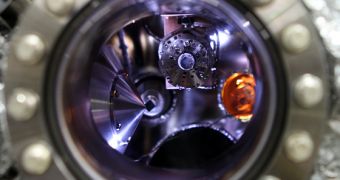Most PCs and consumer electronics nowadays, those that don't need to be constantly plugged into a power socket to work, use lithium-ion batteries, but it wouldn't hurt to have some better ones, so MIT is doing its best to provide.
Researchers from the Massachusetts Institute of Technology have been looking into lithium-air battery designs, believing that they can store four times as much energy in them.
Unfortunately, the reactions between lithium and oxygen aren't fully understood yet, so it has, thus far, been impossible to develop practical batteries.
Fortunately, with PC and consumer electronics components becoming less power-hungry, a severe need for anything better than lithium-ion was averted.
They could still be very useful though, if not in IT, then in battery electric vehicles.
Fortunately, what happens in lithium-air batteries (a new solid state model in this case) has finally been discovered, through use of high-intensity X-ray illumination provided by the advanced light source (ALS) at the Lawrence Berkeley national laboratory (LBNL) in California.
That is one of only two facilities in the world where such an experiment can be held, but we digress.
When discharging, the battery drew lithium ions and used them to convert oxygen into lithium peroxide. ALS studied precisely how the reaction unfolded and determined that it was reversible.
The MIT team now has to enable viable energy retention between charge and discharge (round-trip efficiency) and a good ability to charge and discharge a battery many times (cycle life). Using metal oxydes as the oxygen electrode could achieve both.
“We focused on finding out what really happens during charging and discharging,” says Yang Shao-Horn, the Gail E. Kendall associate professor of mechanical engineering and materials science and engineering. “[The observational method used here] points to a new paradigm of studying reaction mechanisms for electrochemical energy storage. We can use this technique to study a large number of reactions.”

 14 DAY TRIAL //
14 DAY TRIAL //